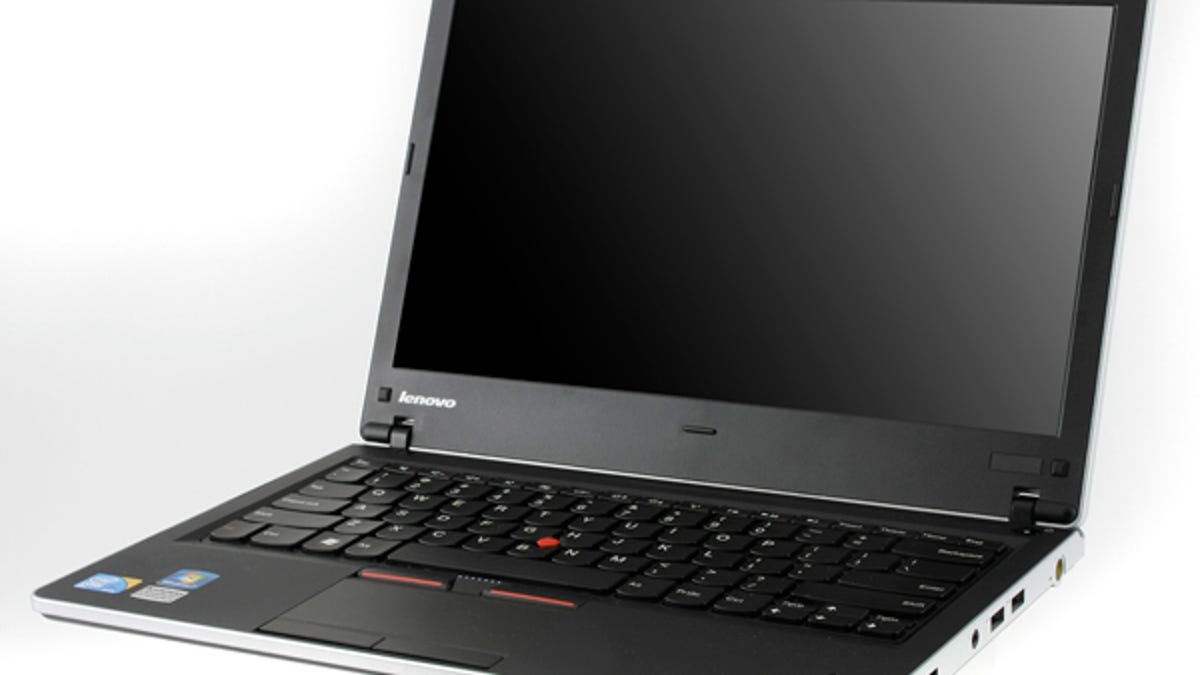Can new ThinkPads keep their Edge? ThinkPad Edge 13-inch First Take
Lenovo's new ThinkPad Edge line begins with a 13-inch thin-and-light. Is it worth the consideration for a budget entrepreneur?

Lenovo has shaken up its slightly uptight ThinkPad image with a relatively bold new direction aimed at small businesses: the ThinkPad Edge line has gloss, silver touches, and no optical drive in the 13-inch laptop, and uses AMD or Intel ULV processors.
With the 13-inch ThinkPad Edge going on sale starting January 5, we have been playing around with one here at the offices to give it a good solid hands-on. Though the starting price is $579, our $899 version has 4GB of RAM, a U7300 Intel Core 2 ULV, and a 320GB hard drive.
Covered in glossy black plastic on the outer lid and a somewhat cheap-looking silvery edges, the Edge has an appearance much closer to an IdeaPad. The overly flat and slick lid was a little much for us, and the inner lid's overabundance of matte plastic surrounding the 13.3-inch LED screen gave it a somewhat budget look. But the Edge is a budget machine, so we forgive it.
In another new wrinkle, the Edge comes in both black and red. The flashier cherry red in its glossy case looks attractive, and we might prefer it a bit more to the slightly generic black.
More impressive is the Edge's newly redesigned raised keyboard, a replacement to the venerable ThinkPad tapered keyboard. The slightly concave keys do a good job at mimicking the feel of a Lenovo traditional keyboard and prevent the feeling of slippage some raised keyboards have. The larger multitouch touch pad also feels very comfortable, along with the ample and smooth matte-surfaced palm rest. For lovers of the old trackpoint nubbin, no worries: it's been retained.
With three USB ports, an HDMI port, VGA, and a memory card reader, the ports are pretty standard on the ThinkPad Edge. However, there is no optical disc drive. The reasoning is that the Edge is a thin-and-light, but we say that's merely a technicality. While the Edge does have an ultralow-voltage processor, it's neither truly thin nor truly light enough to merit dropping the DVD/CD burner. We wish it had been included here, or the Edge made even slimmer.
The glossy LED screen, with a 1,366x768-pixel resolution, was very crisp and bright, which we appreciated. The audio quality, however, was less than ideal, and is softer than most users would like. A six-cell battery offers, according to Lenovo, 8 hours of battery life--we'll find out for ourselves when we run extensive battery tests on it, but on a ULV, we'd expect at least 6.
The ThinkPad Edge, in its lower-cost iterations, comes with a dual-core AMD processor. Our U7300 configuration responded snappily and performed on a similar level to other Core 2 thin-and-lights in anecdotal usage. Tune back in to our full review for benchmark comparisons.
Does this new budget middle ground appeal to you, or do you prefer a lower-end traditional ThinkPad instead? It remains to be seen whether Lenovo's gamble will pay off. So far, the Edge seems to be not quite thin and light enough to be our budget thin-and-light of choice. We're also getting confused about "ThinkPad" branding: with this model, the ThinkPad seems to be slipping so far over to the IdeaPad, it may not be truly distinct enough to merit a different name.

